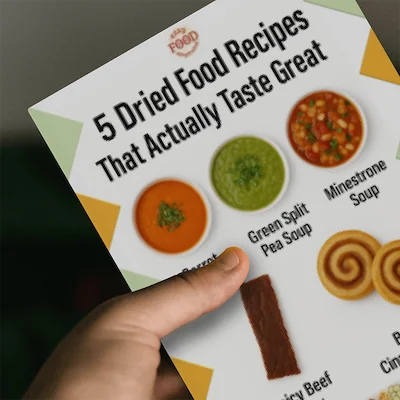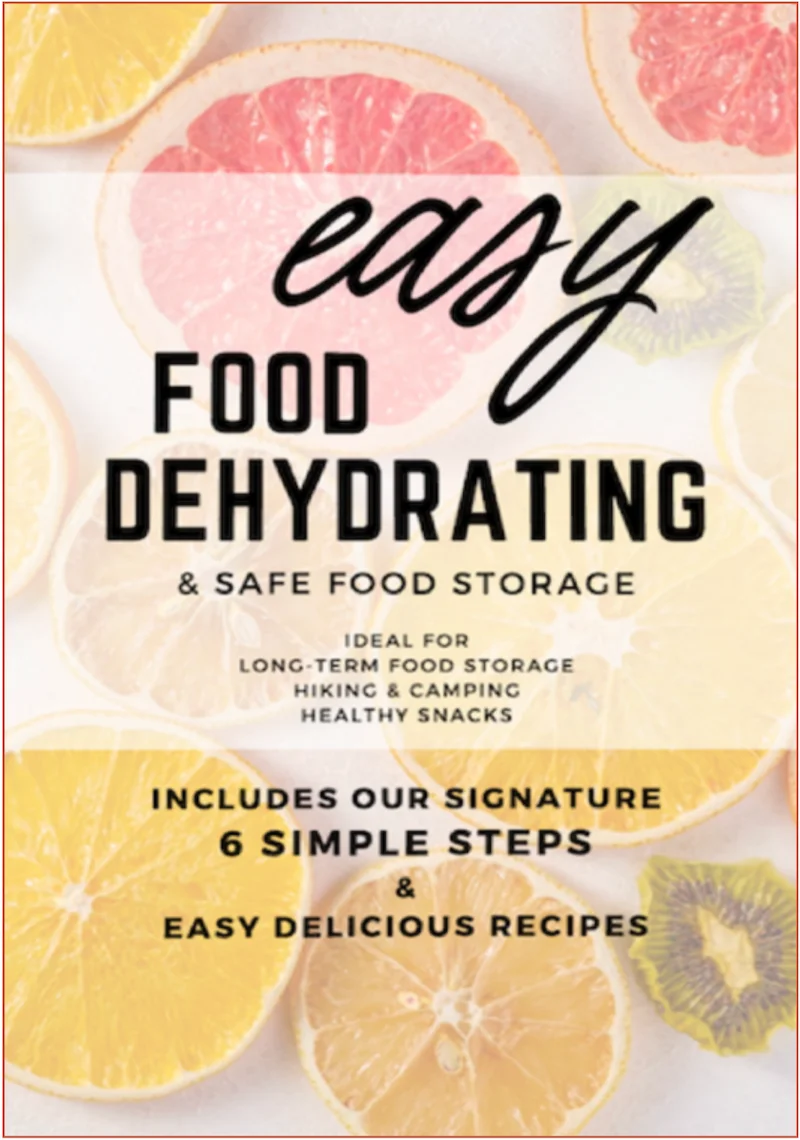What We Mean by “Dehydrate”
Here at Easy Food Dehydrating, “dehydrate” always means using an electric food dehydrator — the easy, reliable way to dry food at home.
- Home
- Rehydrating Dehydrated Food
Rehydrating Dried Food: Pro Tips for Perfect Results

Rehydrating Basics: What Works and Why
Rehydrating dehydrated food is easier than you think—and honestly, it feels a little like kitchen magic.
✅ Quick Answer: How do you rehydrate dehydrated food?
To rehydrate food, soak it in hot or warm water for 30 to 90 minutes, or simmer directly in soups and sauces. For powders or quick recipes, skip soaking and toss it right in—your dish will absorb the flavor and moisture during cooking.
Add water and poof! Your dried carrots, peas, onions, or even meat spring back to life, ready for soup, stew, or a hearty homemade meal.
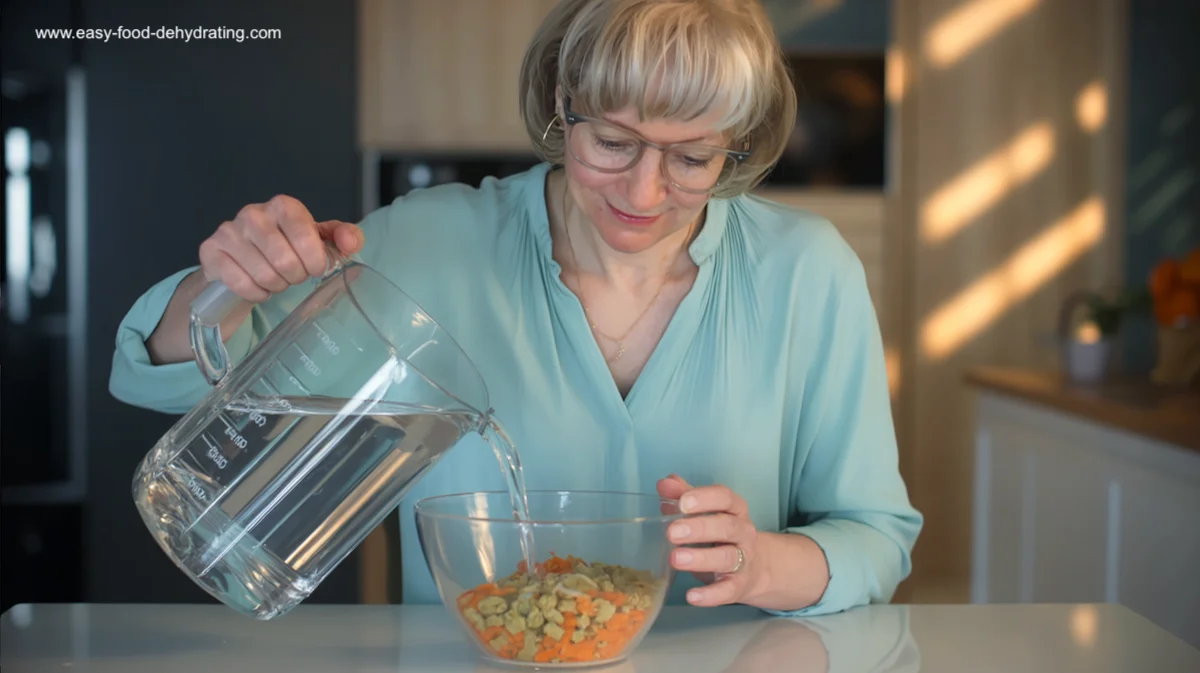
Whether you're planning for emergencies or just using up your pantry stash, knowing how to rehydrate food the right way saves time, reduces waste, and makes meals tastier.
Water Ratios for Rehydrating Dehydrated Food (Quick Chart)
| Dehydrated Food | Water to Food Ratio | Soaking Time (mins) |
|---|---|---|
| Carrots | 2:1 | 30–60 |
| Peas | 2:1 | 30–60 |
| Onions | 1.5:1 | 20–30 |
| Apples | 1.5:1 | 20–30 |
| Bananas | 2:1 | 20–30 |
| Mushrooms | 1:1 | 15–20 |
| Tomatoes | 1.5:1 | 20–30 |
| Ground Beef | 1.25:1 | 30–60 |
| Split Peas | 3:1 | 60–90 |
⚠️ Note: These ratios and times are general guidelines—actual rehydration may vary depending on how dry your food is, how thick it was sliced, and your recipe. Always adjust to taste and texture!
Check Out These Before & After Photos!
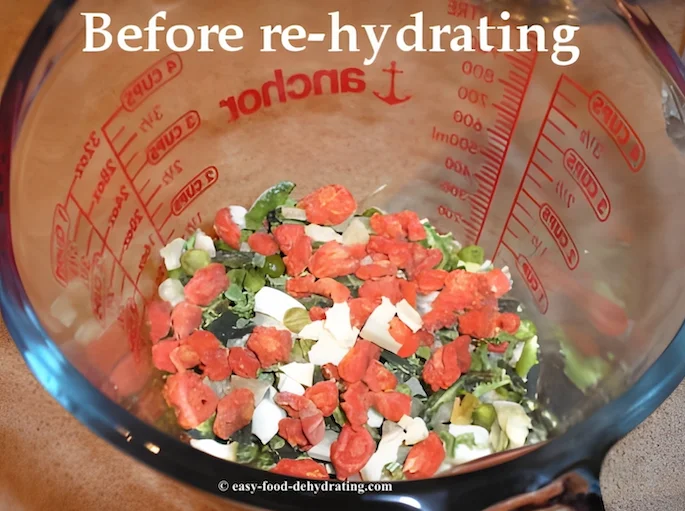
Vegetables Before Rehydration
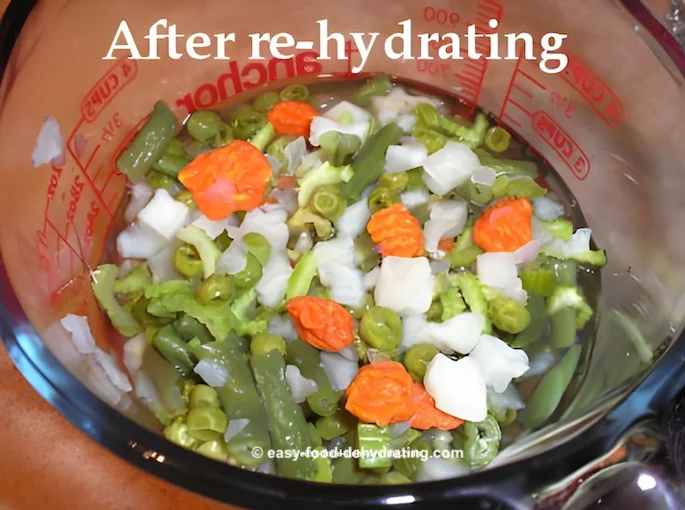
Vegetables After Soaking
These veggies started out as frozen crinkle-cut carrots, peas, green beans, Ore-Ida hash brown potatoes, and freshly dehydrated onion, celery, and elephant garlic.
💡 Pro Tip: You’ve got the makings of a delicious vegetable soup right here!
How Much Water Do You Really Need?

For one cup of dehydrated veggies, start by adding two cups of water in a measuring jug. Check after 30 minutes—if they still look dry, add more.
Hot or Cold Water? Here’s When to Use Each
🔥 Hot Water – Best for quick rehydration or when making broth-based recipes (soups, stews, etc.).
💧 Cold Water – Works fine if you're letting food soak longer (e.g., prepping in the morning for dinner).
🚨 Safety Tip: If using hot water, always bring it back to a boil before consuming to kill any bacteria that might develop.
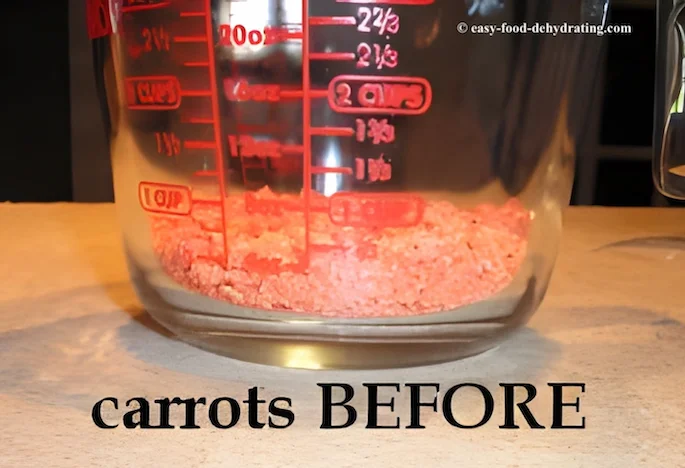
Carrots Before Rehydration

Carrots After Soaking
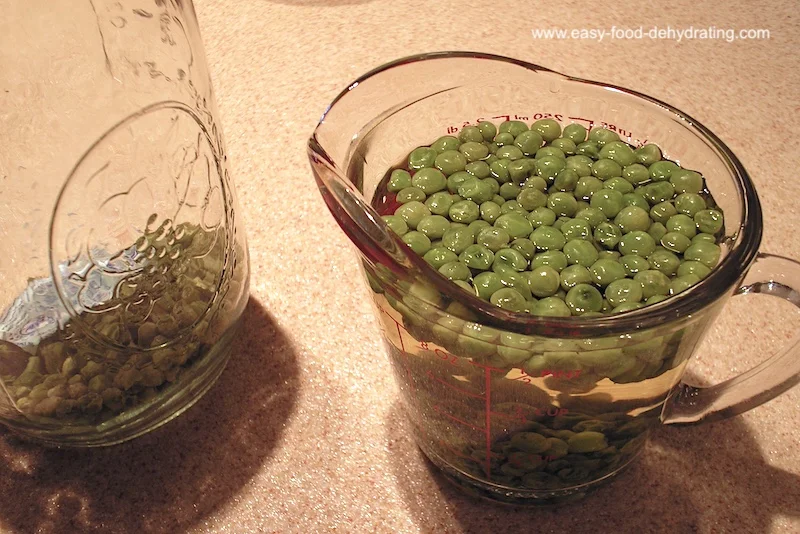
Rehydrating Dehydrated Peas
Does Water Quality Matter? (Yes—Here’s Why)
Your food absorbs the water you use—so choose wisely! If you wouldn’t drink it, don’t use it for rehydrating. Stick to clean, filtered or drinkable water.
No Time to Soak? Try This Quick Powder Hack
Not all dehydrated food needs rehydrating. Instead, grind it up for quick use:
🔹 Dehydrated Garlic → Garlic Powder
🔹 Dried Onions → Onion Powder
🔹 Dehydrated Celery → Celery Powder (add salt for celery salt!)
For soups, toss in dehydrated veggies without soaking—they’ll absorb liquid as they cook!
What Happens to Nutrients When You Dehydrate Food?
A common concern: Does drying food remove its nutrients?
✔ No major loss! Dehydration mainly removes water, not nutrients. But just like fresh food, overcooking can reduce vitamin content.
What Does Rehydrated Food Really Taste Like?
Rehydrated food can be surprisingly close to its fresh counterpart, but texture can vary depending on the vegetable.
My first attempt at rehydrating carrots left them a little spongy, but slicing them before rehydrating helped fix the texture the second go around.
Peas and celery, on the other hand, plump back up beautifully, regaining their fresh, crisp bite.
Shredded cabbage is another winner—it rehydrates perfectly in soups, blending seamlessly into broths and stews.
🥕 Tip: If your veggies still feel a bit too firm after rehydrating, simply cook them a little longer to soften them up.
You might also like this handy water ratio chart over at Preparedness Advice—it’s another great reference alongside the one I’ve shared at the top of the page.
How Much Dried Food Makes One Serving?
A great question from a reader: "How much dried food should I use per serving?"
🔸 Dehydrated veggies shrink to about half their original size. A good rule of thumb:
👋 A couple of handfuls of dried carrots = a normal serving after rehydrating.
Lori’s Pasta Hack: Rehydrating for Quick Cooking!
📖 Read how Lori cut her pasta prep time using rehydration—and how it saved her money!
Thanks for taking the time to read about rehydrating dehydrated food. If you have any questions, write to me here!
Your Rehydrating Questions—Answered Simply
Can I rehydrate food straight into a soup or stew?
Can I rehydrate food straight into a soup or stew?
Absolutely! It’s one of the easiest ways. Just toss your dried veggies or meats right into the pot while it simmers—they’ll soak up liquid and flavor as they cook.
What if my food still feels tough after soaking?
What if my food still feels tough after soaking?
Let it sit a little longer, or simmer it gently to soften it up. Some veggies (like carrots) just need a bit more time to bounce back.
Can I reuse the soaking water?
Can I reuse the soaking water?
Yes! That water is full of nutrients and flavor. Use it as broth, cooking liquid, or add it to your soups and stews.
Water ratios for rehydrating food: Getting it just right
Water ratios for rehydrating food: Getting it just right
A top question: How much water should you use?
🥕 General Rule: Use twice the amount of water as the food you're rehydrating. (Example: 1 cup dried carrots = 2 cups water.)
💡 Reality Check: There’s no one-size-fits-all ratio—your food will absorb as much water as it needs. Once it’s plump enough, drain any excess water, and you’re good to go!
Is cold water ever okay for rehydrating?
Is cold water ever okay for rehydrating?
Sure—if you're prepping in advance. Let it soak for several hours (or overnight in the fridge), and your food will still rehydrate nicely.
Thanks for sticking with me on this topic of rehydrating dehydrated food. Whether you're tossing dried veggies into soup, reviving fruit for a snack, or grinding onions into powder, knowing how to bring your dried ingredients back to life makes all the difference in flavor and texture.
And hey—don’t forget to grab your free 5 Dried Food Recipes You'll Actually Love PDF (below). It’s packed with reader favorites like carrot soup, minestrone soup, split pea soup, spicy beef jerky, and yes—even banana cinnamon rolls!
Get 5 Dried Food Recipes You'll Actually Love
Here's where you can get your copy of our all new
5 Dried Food Recipes (That Actually Taste Great)
They're my all-time favorite easy dried food meals!
Get it here right now.
For Free!
Before You Go...
If you enjoyed this page, tap the ❤️ in the lower right-hand corner.
It saves this page to your Grow bookmarks so you can find it again later.
You’ll also see quick share buttons to copy the link, post to Facebook,
or save it straight to Pinterest.
